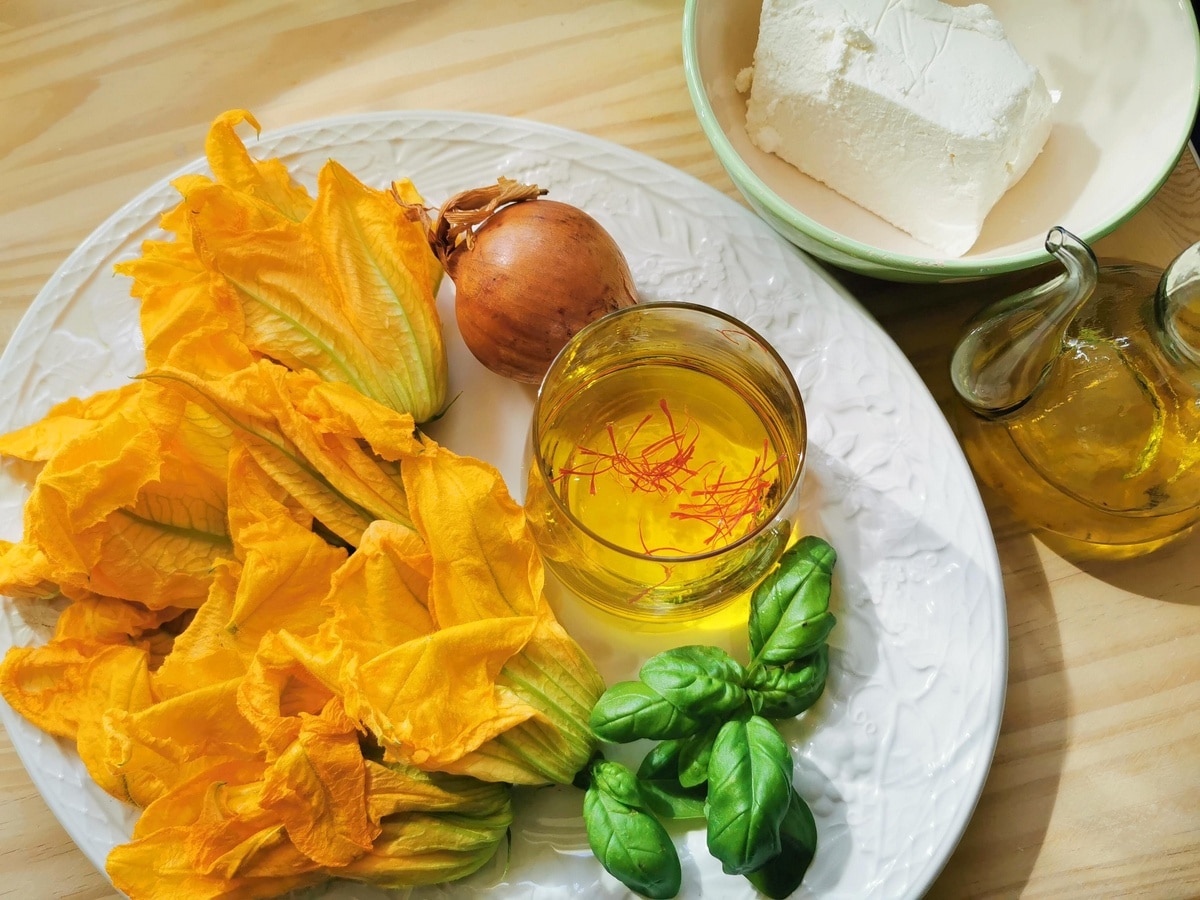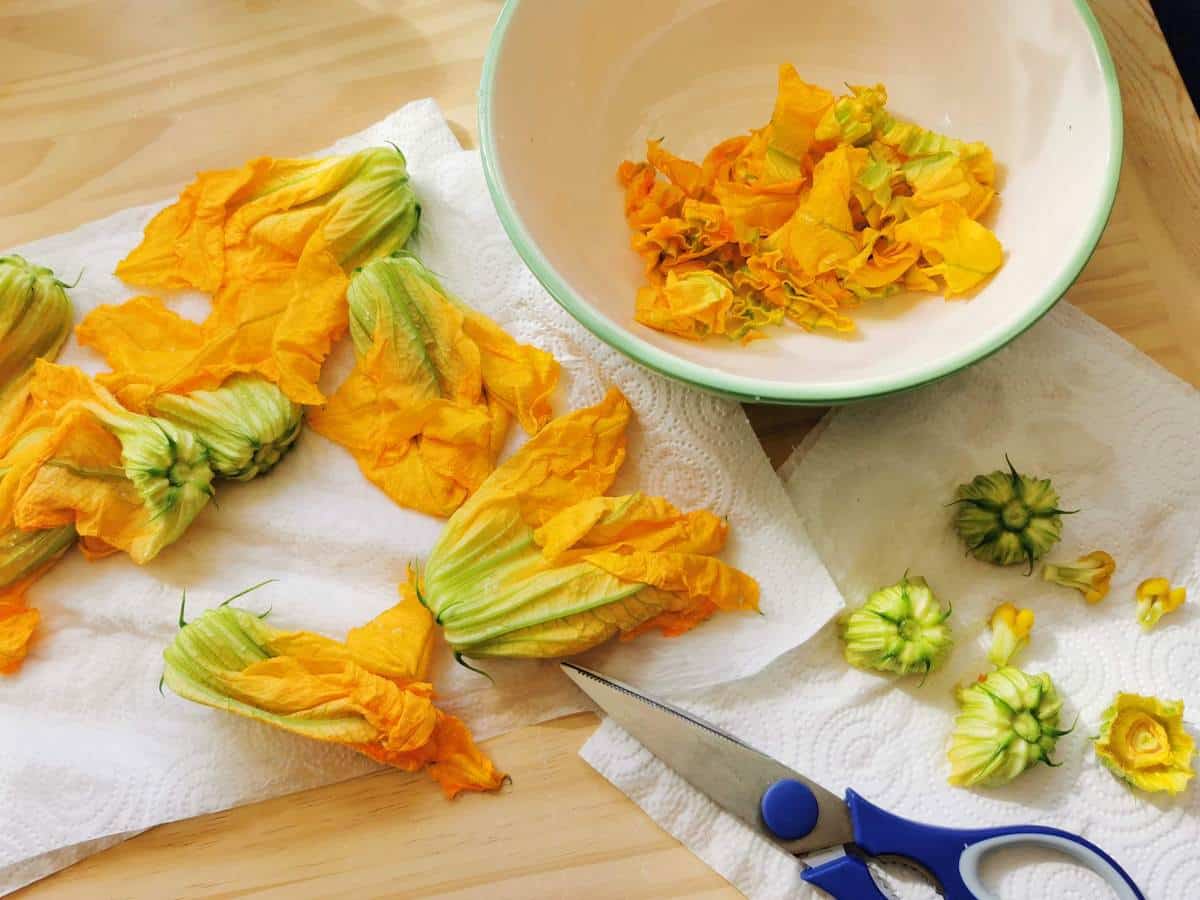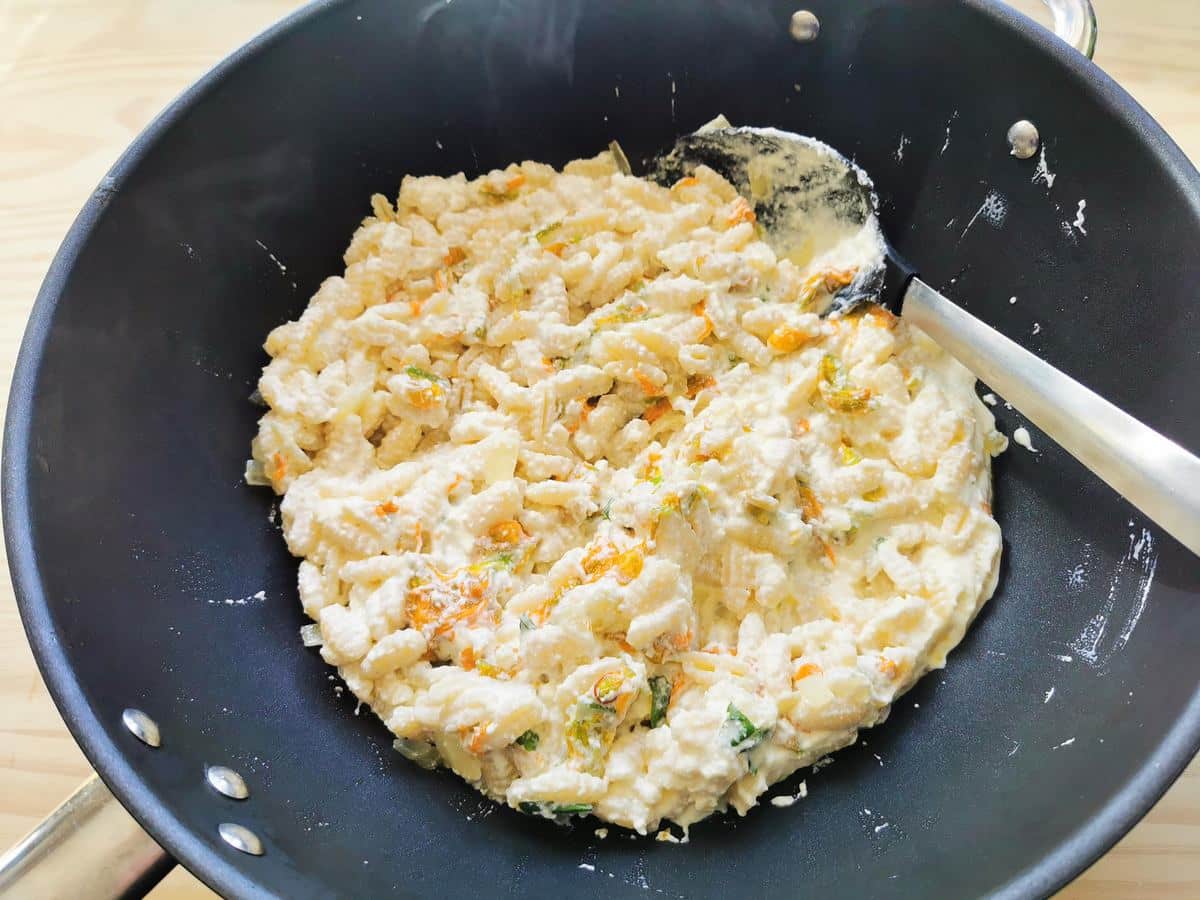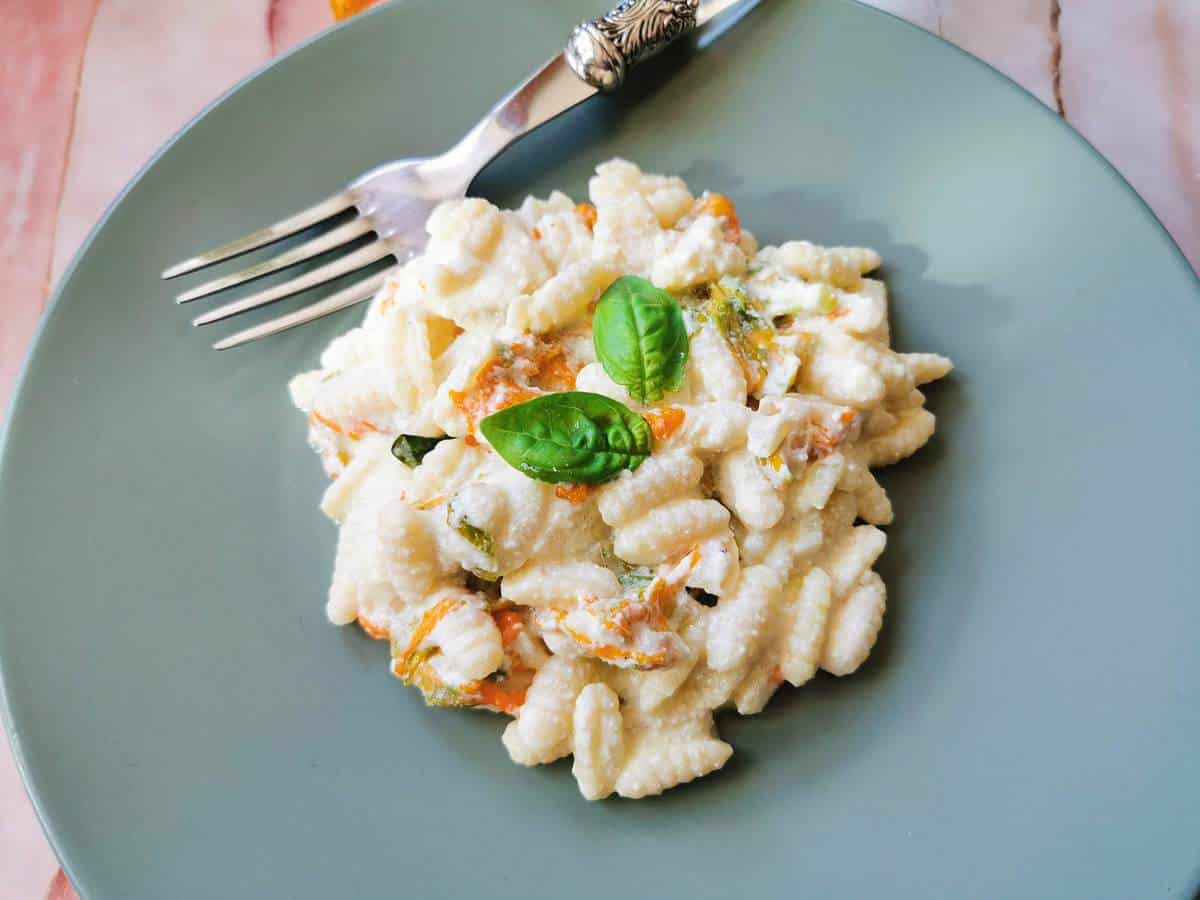This malloreddus with zucchini flowers is made with a flavorful, creamy ricotta and saffron sauce. The delicate flavors of the zucchini flowers make for a unique and delicious meal. Based on a traditional Sardinian recipe, this divine dish is also incredibly quick and can be made in under 30 minutes.
History
Malloreddus, also called gnocchetti sardi or ‘little Sardinian gnocchi’ is a typical pasta from Sardinia. Probably referred to as gnocchi because of the shape, malloreddus looks like tiny potato gnocchi but is, in fact, made of durum wheat semolina flour, water and salt.
When homemade, malloreddus sometimes has a pinch of ground saffron in the dough it gives the pasta a slightly yellow colour. To get the characteristic shape, Sardinians traditionally hand-rolled the pieces of dough on a round reed basket. However, nowadays most people use a small wooden board that looks like an gnocchi board.

Saffron is a commonly used spice in Sardinia because it’s been grown there since the time of the Phoenicians. In fact, 60% of Italy’s saffron comes from the island. Apart from sometimes adding saffron to the malloreddus dough, Sardinians also use it in many recipes, including pasta recipes.
Sheep’s cheese in Sardinia.
There are a lot of sheep in Sardinia, apparently 4 million of them! Actually, almost half of all the sheep in Italy live in Sardinia! Needless to say, this means that lamb and sheep milk products are an important part of the island’s cuisine.
In fact, there are many kinds of sheep’s milk cheese produced there, including much of Italy’s Pecorino Romano. Sheep’s ricotta is practically a staple in the Sardinian kitchen and is often paired with saffron in sweet and savory recipes.
Ingredients
Malloreddus (Sardinian Gnocchi): This unique pasta from Sardinia is excellent at catching the creamy sauce. If you can’t find malloreddus, cavatelli makes a good substitute due to its similar shape and texture.
Zucchini Flowers: These delicate blossoms bring a subtle, slightly sweet flavor. If you can’t source zucchini flowers, you can also use regular zucchini instead.
Ricotta: Provides the rich and creamy sauce. Fresh sheep ricotta is traditional, but you can also cows milk ricotta.
Saffron: You can use either ½ sachet of saffron or ½ teaspoon of saffron threads. Remember to soak the saffron threads in 3 tablespoons of warm water for at least 20 minutes before using them to let the flavors meld into the liquid.
Onion: Finely chopped to meld seamlessly into the sauce.
Extra Virgin Olive Oil: A quality olive oil enriching the flavor of the pasta sauce and vegetables.
Basil Leaves: Fresh basil brings a pop of color and adds a burst of freshness.

Expert Tips
Preparing Zucchini Flowers: Start by gently rinsing the zucchini flowers under cold water to remove any dirt. It’s best to do this individually. After, carefully pat them dry with paper towels. Next, open each flower to remove the stems and stamens, as these parts can be bitter. Then, cut the flower crowns into strips.
Soaking Saffron: To get the most flavor out of the saffron, measure out ½ teaspoon of saffron threads and place them in a small bowl with 3 tablespoons of warm water. Let this mixture sit for at least 20 minutes before using. This soaking process allows the saffron to release its vibrant color and rich flavor, which will beautifully infuse into the ricotta sauce.
Step by Step Instructions
1) Bring a pot of water to boil for the pasta. Once it starts to boil, add salt and bring it to a boil again. Then, cook the malloreddus to al dente according to the package instructions.
2) While the pasta cooks, prepare the zucchini flowers by carefully washing them and cutting the crowns of the zucchini flowers into strips after removing the stems and the stamens.

3) In a deep frying pan or deep sauté pan, heat olive oil over medium heat and sauté the onion until softened. Add the zucchini flower pieces and cook on low heat for a few minutes, stirring frequently. Turn off the heat and set aside.

4) In a bowl, mix the ricotta cheese, chopped basil, soaked saffron (including the water), a drizzle of olive oil, a pinch of salt, and black pepper.

5) Incorporate half a cup of the pasta cooking water to achieve a creamy consistency.

6) Mix the ricotta saffron cream into the pan with the zucchini flowers and onion.

7) Drain the cooked malloreddus, reserving a bit more of the cooking water. Add the malloreddus to the pan with the zucchini flowers, ricotta, and saffron mixture. Mix together, adding a splash of reserved pasta water if it’s too thick.

8) Dish out the creamy pasta garnished with additional chopped basil and optionally grated Pecorino romano.

Storage and Leftovers
Allow any leftover malloreddus with zucchini flowers to cool to room temperature. Then, transfer it to an airtight container and place it in the refrigerator. It will remain fresh for up to 3 days.
To reheat, place the leftovers in a microwave-safe container. Cover it lightly, and heat on medium power for about 2 minutes. Check the pasta, stir, and if necessary, continue to heat in 30-60 second intervals until it’s heated through.
FAQs
The saffron is ready when the water turns a deep yellow or orange color and the threads have softened. This indicates that the saffron has released its flavor and is ready to be used in your dish.
To quickly and efficiently chop zucchini flowers, stack several cleaned flowers on top of each other, roll them up, and then slice across the roll. This technique, known as chiffonade, and is a quick way to cut into strips.
Zucchini flowers are most commonly available from late spring through early autumn. They are typically found at farmers’ markets but can sometimes be found in grocery stores with well-stocked, diverse vegetable sections.
More saffron pasta recipes you may like:
If you make malloreddus with zucchini flowers, ricotta and saffron recipe, I’d love to hear how it turns out and if you liked it. Please leave a comment here on the blog or on The Pasta Project Facebook page. Looking forward to hearing from you.
Buon appetite!
Pin for Later:

If you are interested in learning how to make homemade pasta and different types of gnocchi, check out my shop page for some great video online courses from my friends in Rome! Nothing beats learning to make pasta from Italians! Plus while you’re there why not order a copy of one of my pasta recipe cookbooks or checkout some recommended pasta making tools?
Reader Interactions

